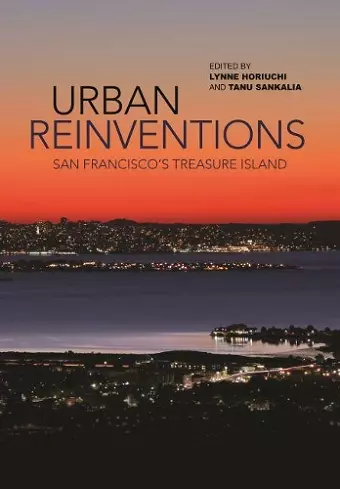Urban Reinventions
San Francisco's Treasure Island
Lynne Horiuchi editor Tanu Sankalia editor
Format:Hardback
Publisher:University of Hawai'i Press
Published:30th Sep '17
Currently unavailable, and unfortunately no date known when it will be back

When it was built in 1937, Treasure Island was considered to be one of the largest man-made islands in the world. Located in the middle of San Francisco Bay, the 400-acre island was constructed out of dredged bay mud in a remarkable feat of Depression-era civil engineering by the U.S. Army Corps of Engineers. Its alluring name is an allusion to the fabled remnants of the California Gold Rush found at the bottom of the ocean floor that makes the island.
This collection of essays tells the story of San Francisco’s Treasure Island—an artificial, disconnected island that has paradoxically been central to the city’s urban ambitions. Conceived as a site for San Francisco’s first airport in an age of automobile and air transport, Treasure Island hosted the Golden Gate International Exposition (GGIE) in 1939 celebrating the completion of the Golden Gate and the San Francisco-Oakland Bay Bridges. With particular focus on Asia and Latin America, the GGIE promoted peace, harmony, and commerce in the Pacific. Treasure Island’s planned use as an airport was scuttled when World War II abruptly reversed the exposition’s message of Pacific unity, and the U.S. government developed Treasure Island and the adjacent Yerba Buena Island into a major Pacific theater naval base.
Today, in the midst of a high-tech boom and in one of the most expensive real-estate markets in the world, the city of San Francisco and its developers are proposing an ambitious vision for a new eco-city of about 19,000 residents on Treasure Island and Yerba Buena Island. The project is considered a model of green urbanism synonymous with a growing global trend toward large-scale, capital-intensive land developments envisioned around ideas of sustainability and spectacular place making.
Seen against the successive history of development, future visions for Treasure Island are part of a process of building and erasure that Horiuchi and Sankalia call urban reinventions. This is a process of radical change in which artificial, detached and delimited sites such as Treasure Island provide an ideal plane for tabula rasa planning driven by property, capital, and state control.
With contributions by authors well known for their interdisciplinary work, this collection demonstrates how a single site may be interpreted in multiple ways: as a world’s...
ISBN: 9780824866020
Dimensions: unknown
Weight: 920g
304 pages